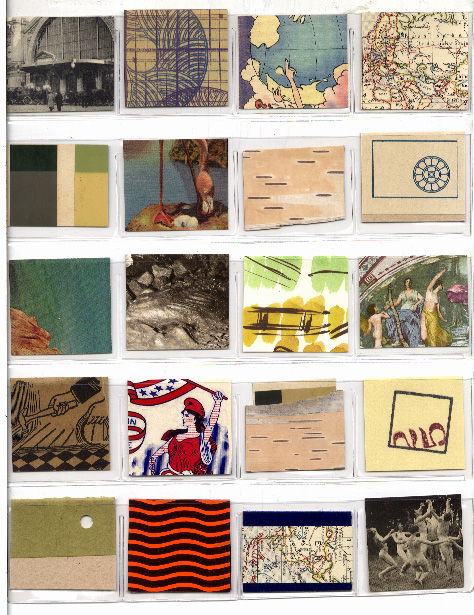An image set by Ray DiPalma
from the East Village Other
The new Chicago Review is out, continuing its recent run of issues so first-rate that you can’t believe the journal has any connection to a school. My understanding is that in recent years at least that relationship may have largely been one of benign neglect, but in this instance that has proven to be an incredibly good strategy. The issue has several of my favorite writers on the planet – C.D. Wright (with a 30-page poem!), Alan Bernheimer, Arkadii Dragomoshchenko, Merrill Gilfillan, Devin Johnston, Peter O’Leary & Paul Hoover are all people one should read as much of as one can get one’s hands on. Important island folk such as Geraldine Monk, Peter Larkin and Medbh McGuckian can be found here as well.
But the contribution that makes me happiest, at least on first reading, is a lovely six-page work, “After Midnight,” written by Ray DiPalma & dedicated to Gilfillan (whose own poems follow immediately thereafter). DiPalma is another poet who deserves to have a honking huge selected or collected poems out, bringing together work from his 30+ previous books, and making evident even to the most dunder-headed what an important figure he is, and has been, now for some 35 or so years. The book as I imagine it would have to be at least 400 pages to give even a decent hint of everything DiPalma has written.
In recent years, DiPalma has given as much energy to his visual art works – he has pieces, often involving stamp work and collage, in the collections of the Museum of Modern Art, the Getty, and the Art Institute of Chicago, among others – and to his teaching at the School for Visual Arts in New York, as he has to promoting his poetry. In fact, I know a number of younger writers around
When I was teaching that same class at SF State in 1981 I mentioned on Monday, one of the interesting aspects of the course was that, for almost every one of the 16 writers we covered during the term, there was at least one student who was willing to stand up and argue militantly against their writing – Bob Perelman was “too slick,” so was Michael Palmer, Hannah Weiners’ journals were an attempt to “cover up that she couldn’t write,” and so on. In fact, there was only one poet whom everyone in the class liked – Ray DiPalma. (The text we read, Planh, is excerpted in In the American Tree.) I remember being struck by that at the time – the fact that I can recall it 24 years hence suggests just how deeply the impression imprinted – because there’s nothing about DiPalma’s work that’s particularly easy – he often presents surfaces as elegant as anything you will find in Palmer or Perelman, but often more densely, without the scenic backdrops that are hinted at in Palmer’s work, or the underlying thematic engines that motivate Perelman’s.
“After Midnight” – the name just happens to be that of a rubber stamp products company – reads on the page like a single text, at least until you realize that it is a series of ten sonnets, composed of self-contained free verse couplets with longish lines that read more like a ghazal:
Without a fixed designation, as a matter of form,
bargaining notations, mnemonic targets, omertà
A third signature, distraction’s forward gaze,
pale abbreviations, the limits of a compass turn
Assertion is within the exclusion and without the inclusion,
I can remember neither the lament it prompted nor its novelty
There are no false alarms, no after effects honorably offered,
no obscure etymologies, arias, no discernible debt
A typefont peculiar to negotiations, constant measurement,
a block of salt, spilled shapes, blank inlays, a German wife
Rain shadows, red seeds, the heft of blue serge,
no want to material display, the game continues
Misled by thought, refractive, invisible commotion, eye for one,
only panorama, muled from place to place, interrogated
That is the third of the ten sections or sonnets here & while I chose it as “most typical,” the whole idea is a misnomer – there’s a tonal development that starts at the poem’s very beginning – all seven couplets of the first section are lists –
Partially filled notebooks, a stopwatch,
green candles, a Chinese screen, knives and forks
– but not, as you can see, obvious ones. The last sonnet shuts with a ring of closure as sharply etched as the old “Mark VII” production company logo at the end of an episode of Dragnet. Yet between points A & B, does anything really “happen?”
That’s the wrong question to ask, of course, because the answer will always be both yes & no. No in the sense of the traditional trappings of narrative discourse, but Yes in that the richness of text pulls one in instantly & moves one along – one is reluctant to have the work end. DiPalma is a master of textual surfaces – one could read him for that aspect of his work alone & learn an enormous number of useful lessons.
Because DiPalma has been published almost entirely by small presses throughout his career, it’s difficult for anyone but the most dedicated fan to get a sense of the reach of his overall project. His poems are not nearly so much objects as they are environments, lush worlds, sensual & crowded. You enter them & can wander endlessly – tho in fact his scale is mostly, as here, quite contained. It’s a world we should all visit often.






